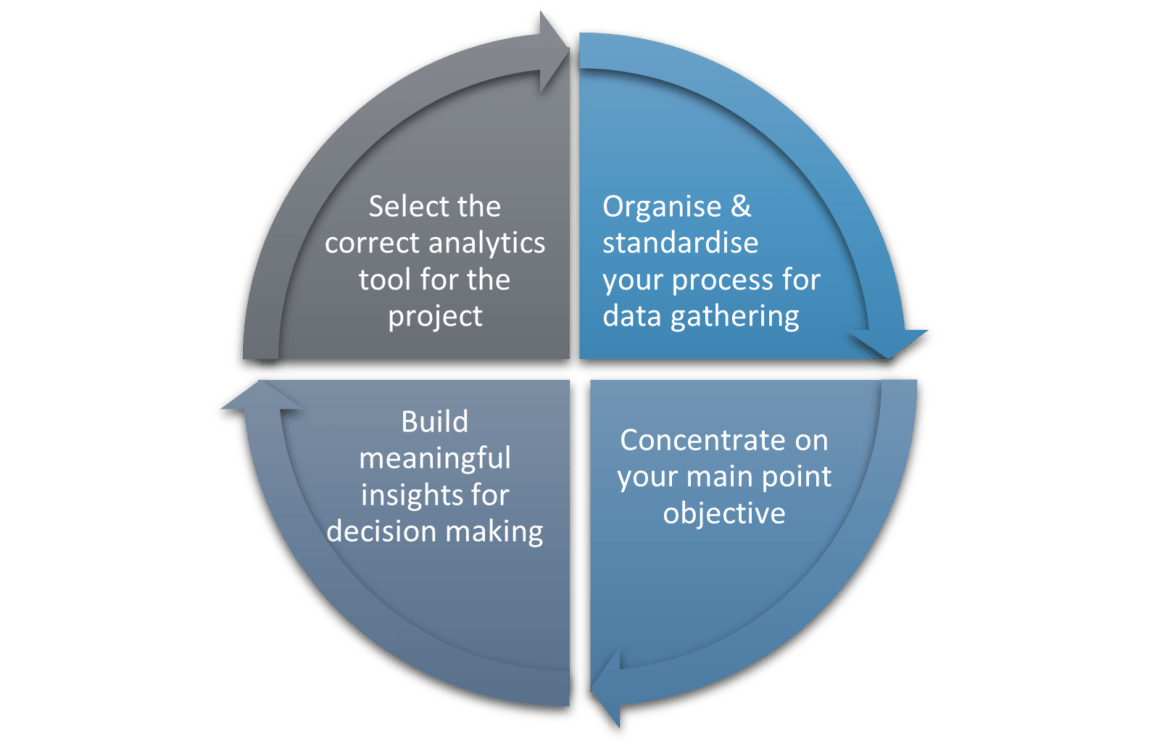Data is widely recognised as being crucial to practically every business in today’s technology-driven society. Within the construction industry this is particularly true; with even a small miscalculation having the potential to result in significant delays and increased costs of millions of pounds where key milestones are missed.
What is Data Analytics?
Data analytics is a method for identifying patterns, trends, and linkages in existing data. Its goal is to solve a problem by using construction data to gain a better knowledge of the situation and anticipate future behaviour based on previous actions.
Data analytics in the construction industry is now being utilised to tackle a wide range of issues, some of which can have a staggering number of variables; not all of which are necessarily immediately apparent.
To produce “informed” predictions, data analytics analyses these variables to identify the relevant factors within a data collection.
Importance of Data Analytics in Construction
Every day, construction project teams deal with a slew of moving pieces on the job site; subcontractors, materials, equipment as well as additional factors such as inevitable changes to scope and contract adjustments. The more complicated construction projects get, especially in an era of greater remote workers, the more tools you’ll need to consider for greater communication and data gathering to make informed decisions.
All of this generates a mass of data, which needs to be filtered and analysed to be of use to the project decision-makers. This can take significant time and resources to achieve manually; enter machine learning and artificial intelligence. These are data analytics approaches that greatly increase the speed and accuracy of this analysis and filtering; organising data and identifying patterns with much greater efficiency than a human could achieve.
Data construction analytics enable preconstruction teams to build budgets that account for all potential project aspects, such as regional labour and material prices, among other things. Solutions using data analytics, machine learning, and artificial intelligence will likely bring about major changes to how engineering and construction firms bid on, and execute, projects; for example, by combining tender information, current business status and past performance data analytics could support go/no go decision making.
The same methods could also be used to support the assessment of bids and predict issues a project may face up to years before starting on site.
Selection of Data Technology for Construction
- Select the Correct Analytics Tool for Projects:With an increasing number of data analytics tools available it’s important to consider which is the correct one for your needs. Within construction, it’s generally considered that tools should cover schedule, cost and risks as standard requirements.Beyond this, tools could support with the management of health and safety on-site, or specifically focus on exec level summary data to manage across portfolios.
- Organise and Standardise Your Processes for Data Gathering:To get the most out of data analytics, you must combine and standardise your data and processes. The higher the quality of your data input, the better the quality of your data output, and thus the more value it will provide the end-user.This could require the creation of a central data platform (or pool) with standardised data entry and organisation methods within a shared environment. With the large volume of data being analysed and input, effective organisation of inputs can greatly speed up the analysis.
- Concentrate on Your Main Project Objective:Focusing on one single area is the simplest way to get started with data analytics solutions for your next project. An overabundance of data analytics adoption might put you back, resulting in missed effort and chaos. You should start by focusing on one or two primary areas where you want to improve project predictability. For example, do you want to be able to better detect and mitigate safety and quality concerns? Or maybe you’d like a better understanding of project risks, such as budget overruns or labour issues?Decide where you need improved insight, determine what format your inputs are currently in, determine what format you would like the output, then find the tool that connects these dots.
Conclusion
In summary, data analytics aids businesses in completing projects more effectively by identifying trends in data and then supporting project decision-makers in identifying possible issues before they happen and taking mitigation to limit their impact.
If you’d like any help analysing or managing your data, get in touch!
You can email us at info@logikalprojects.com
or call on +44 (0)20 7404 4826 (UK & Europe) or +61 1300 564 452 (APAC)
Or you can use the Contact Us form here.







